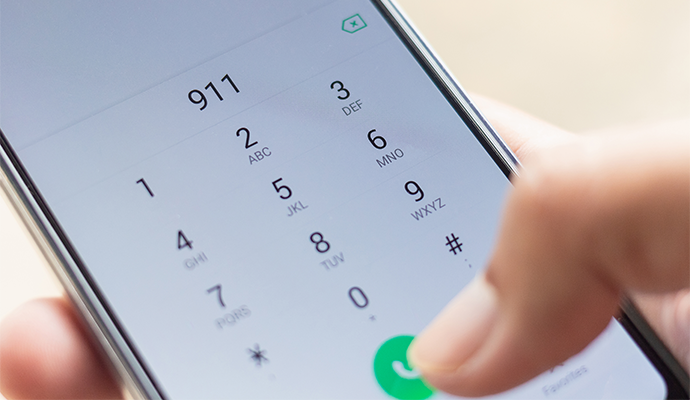Telehealth, Licensure Portability Featured in New Disaster Preparedness Plan
A proposed national strategy for preparing for the next pandemic or disaster includes a framework for expanding access to and coverage of telehealth and a national plan for license portability.

Source: ThinkStock
- A proposed national strategy for preparing for the next pandemic or disaster includes increased access to and coverage of telehealth and a provider licensure plan.
Those ideas are contained in a study released this week by the Healthcare Leadership Council and the Duke-Margolis Center for Health Policy. The 25-page National Dialogue for Healthcare Innovation culls lessons learned from the current coronavirus pandemic and offers guidelines so that the nation will be better prepared if and when something this disruptive happens again.
“This initiative was well positioned to help clarify, shape, and coordinate the execution of that strategy among governmental and private sector leaders,” the report notes. “It was unique in its focus on private-public coordination; in developing recommendations applicable to a broader spectrum of disaster responses beyond pandemics (including natural disasters, bioterrorism, cybersecurity, and others); and in creating targeted, bold recommendations that private sector leaders, the new Congress, and incoming Biden Administration can adopt in the immediate term.”
It’s divided into three categories: improving data and evidence generation, strengthening innovation and supply chain readiness and innovating care delivery approaches. The third category is where most of the connected health recommendations lie.
Telehealth has surged during the COVID-19 crisis, as providers have moved as much in-person care as possible onto virtual health platforms to reduce the chance of infection, ease the crush on hospitals and improve access to care for people at home.
READ MORE: Washington is Awash in New and Reintroduced Telehealth Bills
Aside from providers launching new or expanding existing telehealth platforms, federal and state governments have issued a series of emergency actions, including waivers, to improve coverage for and access to telehealth during the public health emergency. These actions include allowing more types of care providers to use telehealth, expanding the list of locations where telehealth may be used and allowing for the use of more modalities, such as the audio-only phone.
They’ve also taken steps to allow care providers to treat patients in other states through telehealth, mainly through licensure portability.
Those actions are part of the report’s recommendation to “harmonize conflicting requirements during emergencies to improve health care mobility and surge capacity.”
“The Congress and state legislatures should update disaster response legislation to provide for fast waivers that can grant needed flexibility during emergencies, such as those allowing for licensure portability, greater telehealth accessibility, temporarily lift communications restrictions to allow for coordination of care and with public health, and to quickly access PPE stockpiles,” the report states.
“These waivers could be implemented through multiple approaches: the legislation could outline which types of emergencies warrant certain waivers or flexibilities, all waivers or flexibilities could go into effect shortly after an emergency has been declared unless specifically not needed as noted in the emergency declaration, or the legislation could identify a tiered or categorized approach that could be specified by the emergency declaration,” it adds.
READ MORE: FSMB Launches Online Resource for Telehealth License Portability
Those steps are already being considered. Some states are discussing how to improve the process of granting emergency telehealth waivers, and a couple of bills now before Congress look to give the Health and Human Services Secretary the authority to issue federal waivers.
The report also recommends a virtual care strategy that includes an inventory of regulatory constraints to the use of telehealth, so that state and federal governments can tailor their waivers to reduce those barriers during an emergency. This would include identifying geographic regions where broadband access is an issue, developing best practice for telemental health, and identifying opportunities to standardize definitions and terminology for such topics as modalities, sites of services and allowable tools.
“The (Food and Drug Administration) should evaluate how regulations can encourage better deployment of digital technology during public health emergencies, drawing on the regulatory discretion used already for mobile apps and other software,” the report adds. “CMS, state Medicaid agencies, and commercial payers should examine how payment and coverage policies affect uptake of virtual care technologies, with special consideration of how flexibility on using virtual care technologies could be included in alternative payment models.”
With licensure, the report recommends that Congress establish a national emergency licensure policy, allowing hospitals and health systems to address needs by using out-of-state providers and giving those providers – including those in medical school – an opportunity to treat patients where needed.
The report also calls on professional organizations and state legislatures to identify where they can improve the license portability process, creating guidelines and standards for practice flexibility during emergencies.
Other parts of the National Dialogue for Healthcare Innovation reference connected health without directly mentioning it.
Proposals for data and evidence generation recommend platforms that can collect health-related information in real time, identifying at-risk populations and measuring clinical outcomes to monitor treatment and interventions that improve those outcomes. Those tasks could be handled by mHealth and telemedicine technology that gather real-time health data through wearables and devices, as well as remote patient monitoring programs that allow providers to monitor patients from afar.
